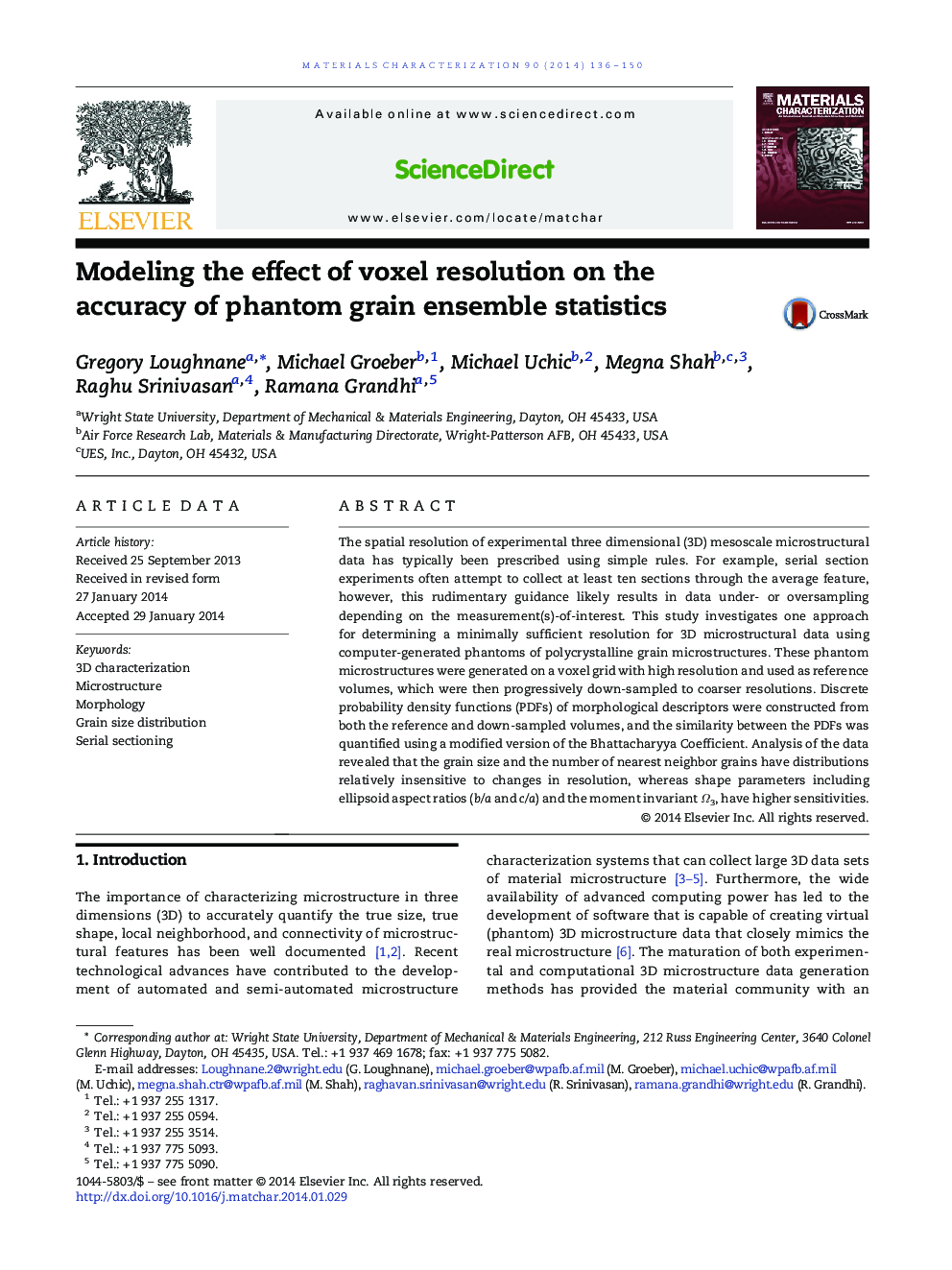| Article ID | Journal | Published Year | Pages | File Type |
|---|---|---|---|---|
| 1570961 | Materials Characterization | 2014 | 15 Pages |
Abstract
The spatial resolution of experimental three dimensional (3D) mesoscale microstructural data has typically been prescribed using simple rules. For example, serial section experiments often attempt to collect at least ten sections through the average feature, however, this rudimentary guidance likely results in data under- or oversampling depending on the measurement(s)-of-interest. This study investigates one approach for determining a minimally sufficient resolution for 3D microstructural data using computer-generated phantoms of polycrystalline grain microstructures. These phantom microstructures were generated on a voxel grid with high resolution and used as reference volumes, which were then progressively down-sampled to coarser resolutions. Discrete probability density functions (PDFs) of morphological descriptors were constructed from both the reference and down-sampled volumes, and the similarity between the PDFs was quantified using a modified version of the Bhattacharyya Coefficient. Analysis of the data revealed that the grain size and the number of nearest neighbor grains have distributions relatively insensitive to changes in resolution, whereas shape parameters including ellipsoid aspect ratios (b/a and c/a) and the moment invariant Ω3, have higher sensitivities.
Related Topics
Physical Sciences and Engineering
Materials Science
Materials Science (General)
Authors
Gregory Loughnane, Michael Groeber, Michael Uchic, Megna Shah, Raghu Srinivasan, Ramana Grandhi,
